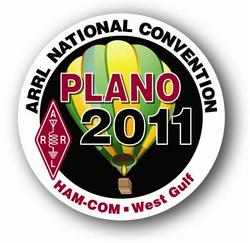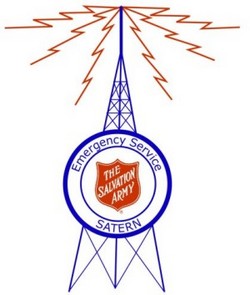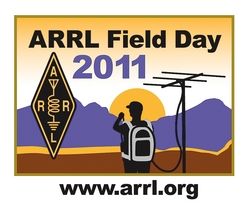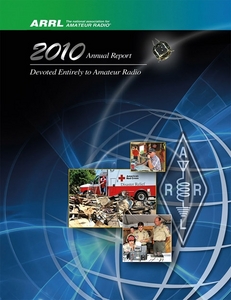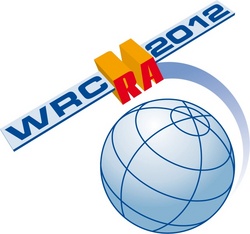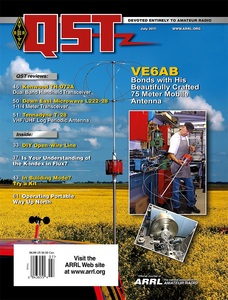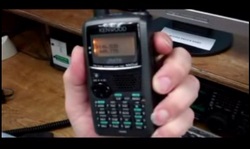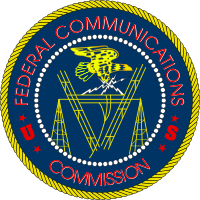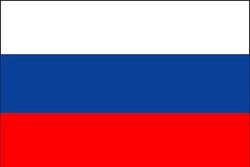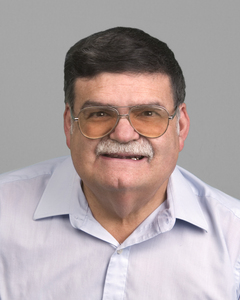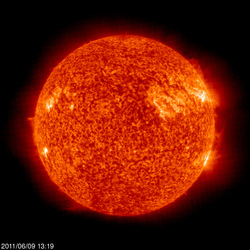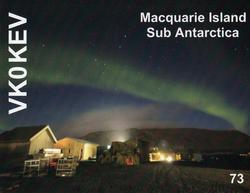 June 9, 2011 John E. Ross, KD8IDJ, Editor
| |||||||||||||
+ Available on ARRL Audio News Follow the 2011 ARRL National Convention on Facebook and Twitter
If you can't make it to the 2011 ARRL National Convention -- held in conjunction with Ham-Com in Plano, Texas June 10-11 -- you can follow all the activities on Facebook and Twitter. Photos will be posted to the ARRL's Facebook page throughout the Convention, while the ARRL EXPO Twitter account will carry live tweets. Discover more about the 2011 ARRL National Convention here. + Public Service: ARRL, SATERN Team Up to Assist in Joplin
After the devastating EF5 tornado that swept through Joplin, Missouri last month, radio amateurs responded to assist with providing support in multiple ways. On Friday, June 3, the Salvation Army -- which has a Memorandum of Understanding with the ARRL -- contacted the ARRL, seeking the League's assistance to provide hams who could help support the agency's work in Joplin. More than 50 Amateur Radio operators responded to the request to help the Salvation Army Team Emergency Radio Network (SATERN) supply logistical support to the affected areas. Just two days later, all personnel needs had been met. These hams helped to relay information back to the Salvation Army's Joplin headquarters about inventory, requests for food and drink and maintenance problems. Both the ARRL and SATERN greatly appreciate the response from the amateur community. + ARRL Field Day: It's Not Too Late to Prepare for Field Day
Now is the time to start getting information out to the public about your ARRL Field Day activities. ARRL Field Day -- the largest on-the-air operating event -- is the one of the best opportunities of the year for showing our Amateur Radio capabilities to the public. ARRL Media and Public Relations Manager Allen Pitts, W1AGP, notes that the ARRL has made many media materials available for local use. "Our visibility to the public is important in antenna, band preservation and texting issues, so we encourage you to use this opportunity to showcase what Amateur Radio can do," he said. Download an audio PSA that can air on your local radio stations here. Get a press release, a government proclamation template and invitation letters that you can use to invite your local officials to your Field Day site here. Find high-definition video files suitable for airing on your local television stations here. Get more information on ARRL Field Day, including the 2011 ARRL Field Day logo and operating tips here. More info, the logo and tips are here. Find a Field Day station near you here. ARRL Field Day is June 25-26. + 2010 ARRL Annual Report Now Available
The ARRL Annual Report for 2010 -- now available online and in print -- reviews the major events of the year and documents the renewed growth of both the ARRL and the activities of the Amateur Radio Service. For the fourth consecutive year, ARRL membership grew -- totaling 156,475 members at year end. In his introduction, ARRL Chief Executive Officer David Sumner, K1ZZ, noted numerous challenges facing the ARRL. "But we also have great strengths," he explained, "and if we harness them effectively over the next few years, the ARRL and Amateur Radio will be well positioned for a bright second century -- at least as bright as their first." Read more here. WRC-12: US Proposes WRC-12 Allocations for HF Radars The ARRL and its partners in the IARU have been involved in the preparations for several items on the 2012 World Radiocommunication Conference (WRC-12) agenda. Agenda item 1.15 is "to consider possible allocations in the range 3-50 MHz to the radiolocation service for oceanographic radar applications." Such radars have been in operation in coastal areas for many years, typically under experimental licenses.
Based on protection requirements for the Amateur Service that the IARU had arranged to be included in ITU documentation, the Conference Preparatory Meeting (CPM) Report for WRC-12 that was adopted in February concluded that sharing between oceanographic radars and the Amateur Service "seems to be difficult." Sharing studies, therefore, focused on in-band compatibility in the bands used only by the fixed and/or land mobile services. The CPM Report offers three methods of satisfying the agenda item through various combinations of primary and secondary allocations, with the objective of satisfying the operational need for safety systems (e.g. for the detection of tsunamis) and providing for the operation of other systems while protecting other allocated services from harmful interference. Read more here. + Check Out the July Issue of QST The July issue of QST is jam-packed with all sorts of things that today's Amateur Radio operator needs. From product reviews to experiments to contesting, this issue of QST has something for just about everyone.
Radio amateurs who were active in the 1950s through the 1970s have most likely built a radio from a kit. But even 60 years later, hams can experience the fun that goes hand-in-hand with kit building. In his article "Electronic Kits Still in the Picture," Mark A. Lacy, W5TXR, says that hams today can still have the thrill of building a radio from kits that incorporate today's technology. Hams know that sunspots and solar activity influence band conditions. But how can we use that information ? QST Technical Editor Joel Hallas, W1ZR, explains the daily sunspot number, solar radio flux and more in his article "Solar Indices -- What Do They Mean?" Join John Reisenauer Jr, KL7JR, as he takes to Canada's Northwest Territories and the Yukon to heed the call of the wild -- and the unpredictable challenges of Amateur Radio -- in his article "The Call Sign of the Wild." In his article "After the 73s," QST Assistant Editor Steve Sant Andrea, AG1YK, relates that although ARRL's Logbook of The World has changed the way many hams verify a contact, others still rely on QSL cards. Hams across the country participated in the 2010 ARRL Simulated Emergency Test, giving served agencies and the news media a public demonstration of our capabilities. ARRL Field Organization Supervisor Steve Ewald, NV1X, presents the results of the SET in the July issue.
ARRL Contributing Editor Howard Robins, W1HSR, takes a look at the Kenwood TH-D72A dual band handheld transceiver in this month's Product Review. He says that this rig "seamlessly folds APRS operation and a packet TNC into a full featured, easy-to-use dual band handheld." ARRL Contributing Editor Ward Silver, N0AX, checks out the Down East Microwave L222-28 1¼ meter transverter. He says the transverter "is a fine solution for amateurs looking to expand station coverage to the 1.25 meter band. It can be adapted to interface with a variety of radios and receivers, and transmits well." Silver also test drove the Tennadyne T-28 VHF/UHF log periodic antenna. He says that this antenna "is ruggedly built and will get you on six amateur bands with some gain from a single feed line." Jay Townsend, WS7I, delivers the results of the 2011 ARRL RTTY Roundup. This year, participants in 132 countries submitted almost 1600 logs containing half a million contacts. Ken Harker, WM5R, has the results of the 2010 ARRL 10 Meter Contest. For the first time ever in this contest, Mexican states counted as multipliers, with 26 of the 32 Mexican states on the air. Of course, there are the usual columns you know and expect in the July QST: Happenings, Hints & Kinks, The Doctor Is IN, How's DX, Technical Correspondence, Vintage Radio and more. Look for your July issue in your mailbox. QST is the official journal of ARRL, the national association for Amateur Radio. QST is just one of the many benefits of ARRL membership. To join or renew your ARRL membership, please see the ARRL Web page. + FCC News: FCC Takes Strong Stance Against Radio Jamming, Issues $24,000 Fine to California Man
On June 6, the FCC issued a Forfeiture Order in the amount of $24,000 against Kevin W. Bondy of Encino, California, for engaging in unlicensed radio operation and intentional interference to licensed radio operations and for refusing to allow an inspection of his radio equipment by FCC personnel. Bondy -- licensee of General Mobile Radio Service (GMRS) Station WQGX752 -- is accused of repeatedly and intentionally jamming four land mobile frequencies assigned to The Oaks Shopping Center in Thousand Oaks, California. In assessing the $24,000 fine, the FCC noted that it was responsible for making and enforcing regulations to prevent interference and to maintain control over the use of the radio spectrum in a manner that promotes the public interest and convenience. "Bondy's acts cut at the heart of the Commission's responsibilities to protect the nation's airwaves and regulate use of the spectrum," the Order said. "Bondy operated a radio without a license on the specific frequencies assigned and licensed by the Commission to The Oaks, for the explicit and expressed purpose of prohibiting The Oaks's use of its licensed frequencies. This type of conduct inhibits the Commission's ability to effectively regulate and maintain control over the use of the spectrum and will not be tolerated." Bondy has until July 6 to pay the fine. + FCC News: FCC Seeks Comments on Terminating Certain Docketed Proceedings In a Public Notice (CG Docket No 11-99) released on June 3, the FCC's Consumer & Governmental Affairs Bureau (CGB) is seeking comments on whether or not it should terminate approximately 800 docketed proceedings. There are numerous proceedings pertaining to Amateur Radio on the list. These proceedings -- some going back to 1991 -- include dockets where no further action is required or contemplated, as well as those in which no pleadings or other documents have been filed since December 31, 2004. The record in a terminated docket will remain a part of the FCC's official records; the various pleadings, orders and other documents in that docket will continue to be accessible to the public, post-termination. With this Public Notice, the CGB is seeking comment from interested parties on the possible termination of those proceedings. Comments will be accepted within 30 days after the Public Notice is published in the Federal Register; reply comments must be filed within 45 days after publication. As of June 7, a publication date has not been set. Instructions on how to file comments are listed beginning on page 2 of the Public Notice. + On the Air: ARRL VHF/UHF Advisory Committee Seeks Input The ARRL would like to encourage more participation in its several VHF/UHF contests held each year. Many of the HF transceivers sold in recent years include 50 MHz, and some also include the 144 and 432 MHz bands with multi-mode capabilities. The question at hand is how can we encourage more owners of such radios to utilize these bands and modes to participate in VHF/UHF contests? The ARRL VHF/UHF Advisory Committee (VUAC) has been asked to consider this question, and to make recommendations to encourage, explore and expand the ARRL VHF and UHF contests and other operating activities by using the multi-band and multi-mode capabilities of modern transceivers and related equipment. The VUAC would like to ask the Amateur Radio community to provide their comments and ideas for consideration. Please send any comments or ideas you have on this matter to your ARRL VUAC Division representative no later than July 1, 2011. A listing of each Division's VUAC representative can be found at http://www.arrl.org/arrl-staff-vuac-cac. + On the Air: New Russian Prefix System in Use If you have been on the HF bands lately, you may have noticed that a number of new prefixes are in use by stations in the Russian Federation. Here is a summary of the changes recently adopted by the Russian telecommunication authorities. Thanks to SRR President Roman Thomas, R5AA (ex-RZ3AA) for the information.
+ Changing of the Guard: Gene Zimmerman, W3ZZ, to Retire from "The World Above 50 MHz"
If you're a VHF+ fan, you probably read "The World Above 50 MHz," written by Gene Zimmerman, W3ZZ, of Gaithersburg, Maryland. For the last nine years, Zimmerman -- an ARRL Life Member -- has written this popular QST column, but the July 2011 issue will be his last. "When I accepted the duties of VHF Editor in 2002, I did so well knowing that my tenure would be circumscribed and likely not to exceed a decade in time," he wrote in his farewell column. "There are many reasons for this, most importantly that an individual begins to run out of new ideas after a given amount of time and that the position -- and the readership -- would benefit from fresh viewpoints." Beginning with the August 2011 issue of QST, Jon Jones, N0JK, of Wichita, Kansas, will take over the column. Read more here. Solar Update
Tad "Until the Sun went down" Cook, K7RA, reports: Although higher early in the reporting week, the average daily sunspot numbers declined more than 4 points to 85.7, while the average of daily solar flux numbers was down 1.5 points to 101.6. The predicted solar flux for the near term is 88 on June 9-15, and 90, 95, 95, 92, 92 and 92 on June 16-21. The solar flux is then expected to rise to a peak of 115 on June 28. The predicted planetary A index is 20, 25, 12, and 8 on June 9-12, then 5 on June 13-22, then peaking at 15 on June 24-25. Check out this link sent by Scott Bidstrup, TI3/W7RI, showing some fantastic HD videos of recent solar eruptions. Look for more information on the ARRL website on Friday, June 10. For more information concerning radio propagation, visit the ARRL Technical Information Service Propagation page. This week's "Tad Cookism" is brought to you by The Human League's (Keep Feeling) Fascination. There's Still Time to Enter the 2011 ARRL Photo Contest! Have you ever wanted to see a photo of yours in QST, the annual ARRL Amateur Radio Calendar or another ARRL publication? Well, here's your chance! If you're among the winners, not only will your photographic skill be propagated far and wide, but we're offering $100 as the First Prize. The winning photo and three runners-up will be published in QST. All submitted photos will also be considered for the 2012 ARRL Calendar.
DXCC Desk Approves Current VK0KEV Macquarie Island DXpedition
ARRL DXCC Manager Bill Moore, NC1L, reports that the current VK0KEV DXpedition to Macquarie Island has been approved for DXCC credit. "If you had cards that were recently rejected for this operation, please send an e-mail to the ARRL DXCC Desk," Moore said. "Please note that due to extremely heavy e-mail, DXCC staff may not respond to your message. Once your record is updated, results will appear in Logbook of The World (LoTW) accounts or in the live, daily DXCC Standings." This Week on the Radio This week:
Next week:
All dates, unless otherwise stated, are UTC. See the ARRL Contest Branch page, the ARRL Contest Update and the WA7BNM Contest Calendar for more information. Looking for a Special Event station? Be sure to check out the ARRL Special Event Stations Web page. Upcoming ARRL Section, State and Division Conventions and Events
To find a convention or hamfest near you, click here. ARRL -- Your One-Stop Resource for Amateur Radio News and Information Join or Renew Today! ARRL membership includes QST, Amateur Radio's most popular and informative journal, delivered to your mailbox each month. Subscribe to NCJ -- the National Contest Journal. Published bi-monthly, features articles by top contesters, letters, hints, statistics, scores, NA Sprint and QSO Parties. Subscribe to QEX -- A Forum for Communications Experimenters. Published bi-monthly, features technical articles, construction projects, columns and other items of interest to radio amateurs and communications professionals. Free of charge to ARRL members: Subscribe to the ARES E-Letter (monthly public service and emergency communications news), the ARRL Contest Update (bi-weekly contest newsletter), Division and Section news alerts -- and much more! Find us on Facebook! ARRL offers a wide array of products to enhance your enjoyment of Amateur Radio Donate to the fund of your choice -- support programs not funded by member dues! Click here to advertise in this newsletter. | |||||||||||||
